The true spirit of Yuletide is shaman, flying reindeer and magic mushrooms
The true spirit of Yuletide is shaman, flying reindeer and magic mushrooms
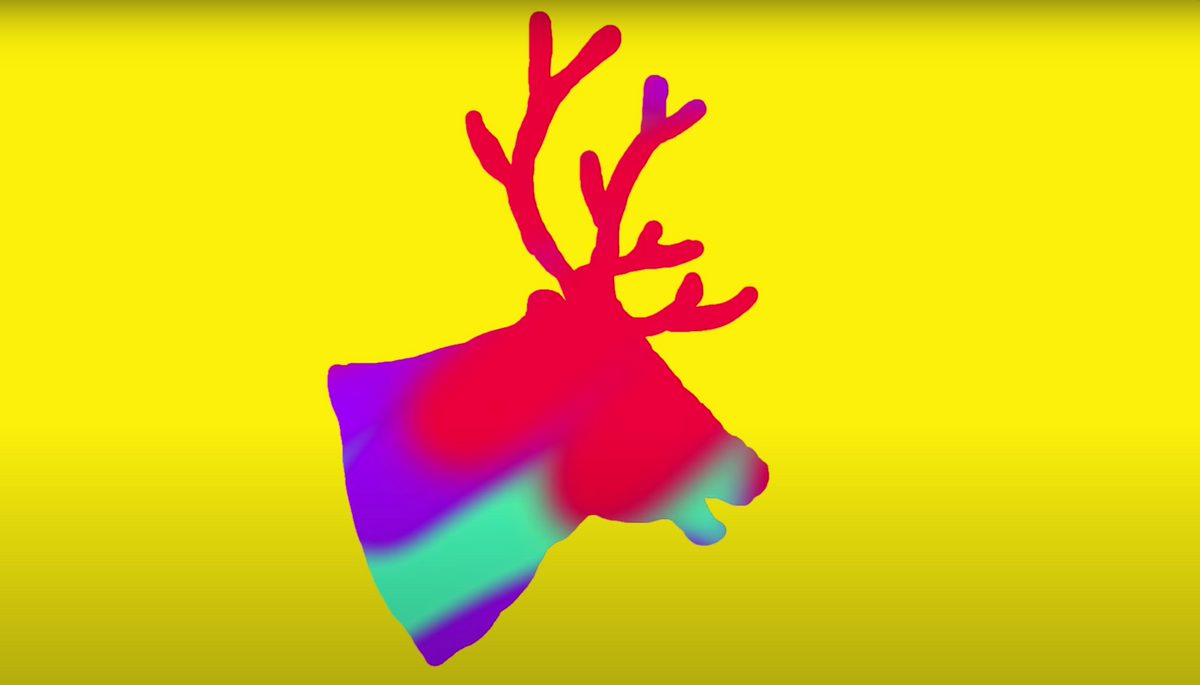
Nan and Grampa may be locked out, but for millions of children nothing can dampen the excited anticipation of the most important Christmas presence of all. How many little ones are seeking reassurance that a certain chubby superspreader of Yuletide joy will still make his annual appearance, in spite of travel restrictions?
But Daddy, is Father Christmas in our bubble?
“Mummy, does Santa have to wear a mask?” “Can reindeer get Covid?” Probably not, but they can, it seems, get high. Not only that, they choose to get high, and their inebriant of choice is the classic fairy toadstool, the red and white magic mushroom known as the Fly Agaric (Amanita muscaria). That’s what gives them the ability to fly (and probably accounts for the colour of Rudolph’s nose), which is why Mr. Claus uses them to pull his sleigh on Christmas Eve.
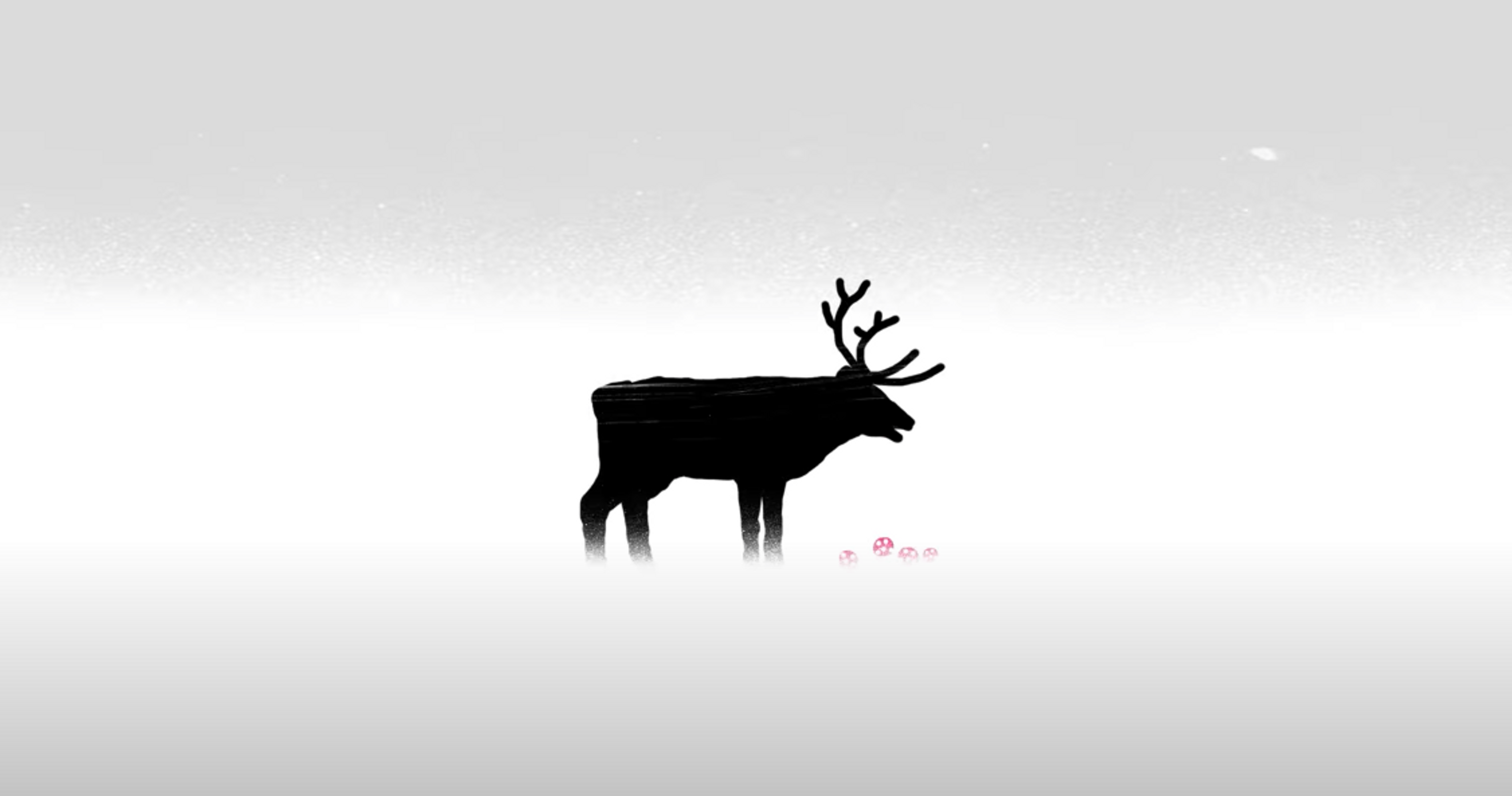
What’s more the figure of Father Christmas springs from the mushroom-enflamed minds of Arctic shamans tripping on reindeer piss. What? You rave sir! Honestly, I gibber not, but I admit for those of you who still believe in a different Father Christmas this may all come as a bit of a shock; so let’s calm down, take a deep breath and examine the evidence.
Where does Father Christmas come from? The Arctic Circle; Lapland to be precise. Where do reindeer come from? Lapland; well all around the Arctic Circle to be less precise. And who are these shamans who drink reindeer piss? Laplanders. What colour clothes does Father Christmas wear? Red and white. And what colour are the mushrooms? Bingo!

Such outlandish fungal speculations about the origins of Father Christmas can be traced back to 1955, when US financier and amateur mushroom hound R. Gordon Wasson and his Russian wife Valentina travelled to Mexico to study the ritual native use of hallucinogenic mushrooms. They found a healer called Maria Sabina, who allowed them to participate in a ritual and experience the mushroom’s effects. The mushrooms were a psilocybin species and the Wassons are the first ethnic Europeans known to have eaten them. It blew their minds.
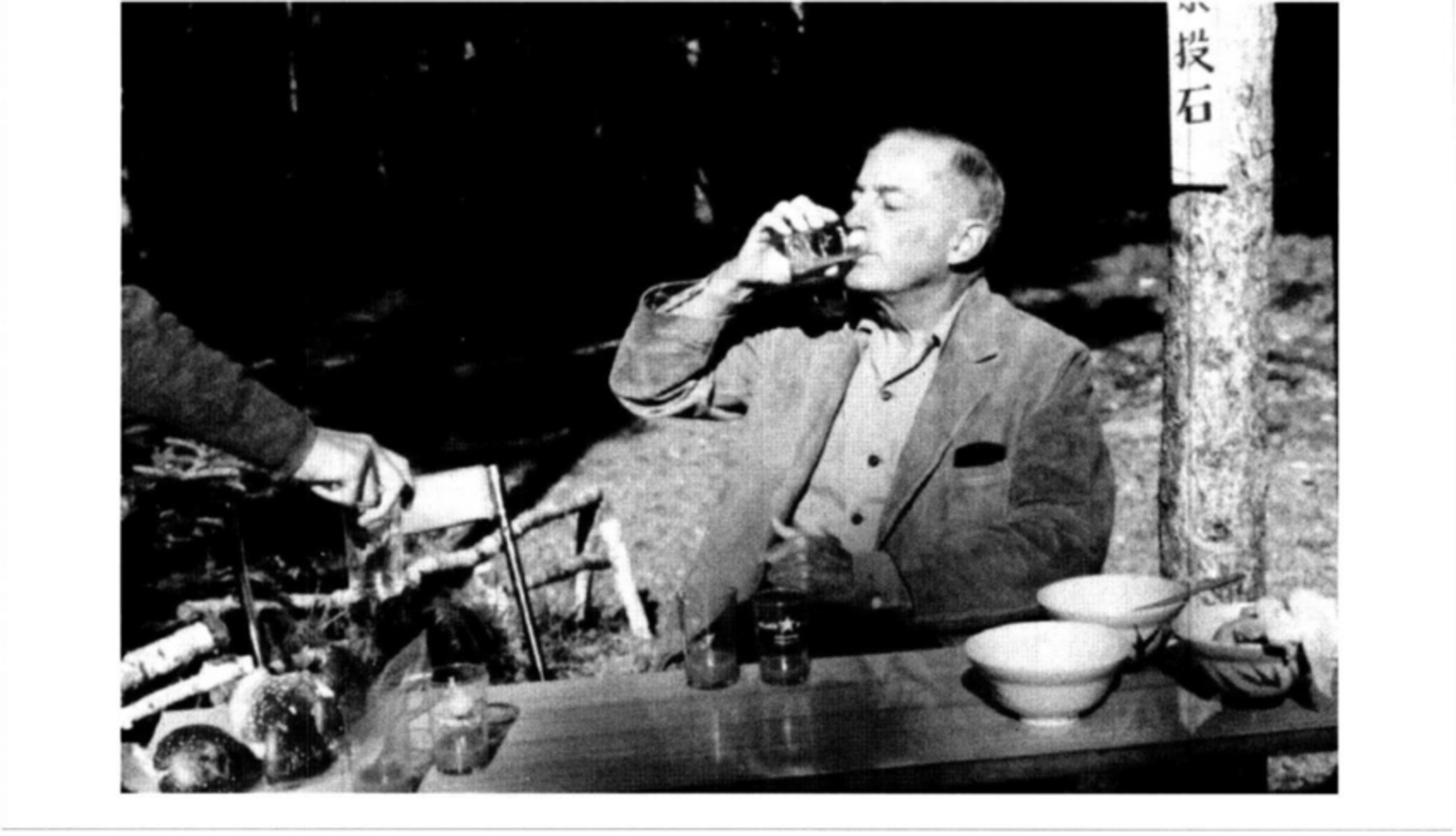
Photo of R. Gordon Wasson sampling the pressed juice of Amanita muscaria in Japan, circa 1965
In May 1957 Life magazine published a feature by Wasson titled "Seeking the Magic Mushroom". This was the first time the term magic mushroom had been used to refer to psilocybin mushrooms. Six days later the journal This Week published an interview with Valentina titled “I Ate the Sacred Mushroom”, and the cat was truly out of the bag. The psychedelic revolution had begun.
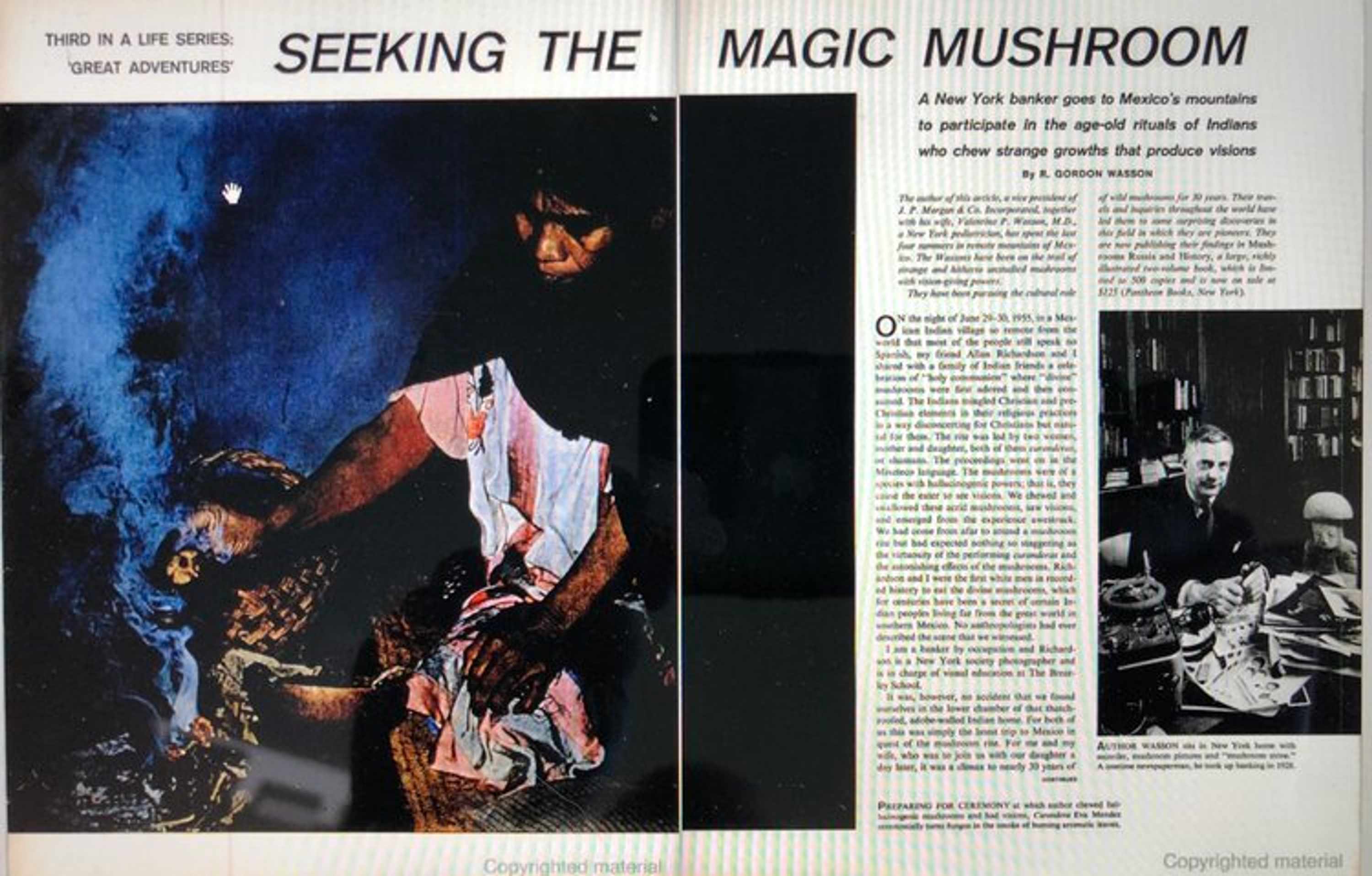
Wasson was convinced that sacred mushroom use in human culture was ancient and universal. In a book he published in 1968, Soma: Divine Mushroom of Immortality, Wasson proposed that the key ingredient in the fabled entheogenic (‘god-manifesting’) brew celebrated in the ancient Hindu Vedas was the Fly Agaric mushroom.
In another book Mushrooms, Russia and History, the Wassons established that reindeer-herding Siberian shamans utilized Fly Agarics as a ritual inebriant. The reindeer deliberately seek out the mushrooms and zone out on them. Since the knocked-out reindeer were very docile it was easy to collect their urine, which contained plenty of the good stuff and was then drunk by the shamans, who in turn would distribute their urine to be drunk by lesser mortals as a sort of psychedelic small beer.
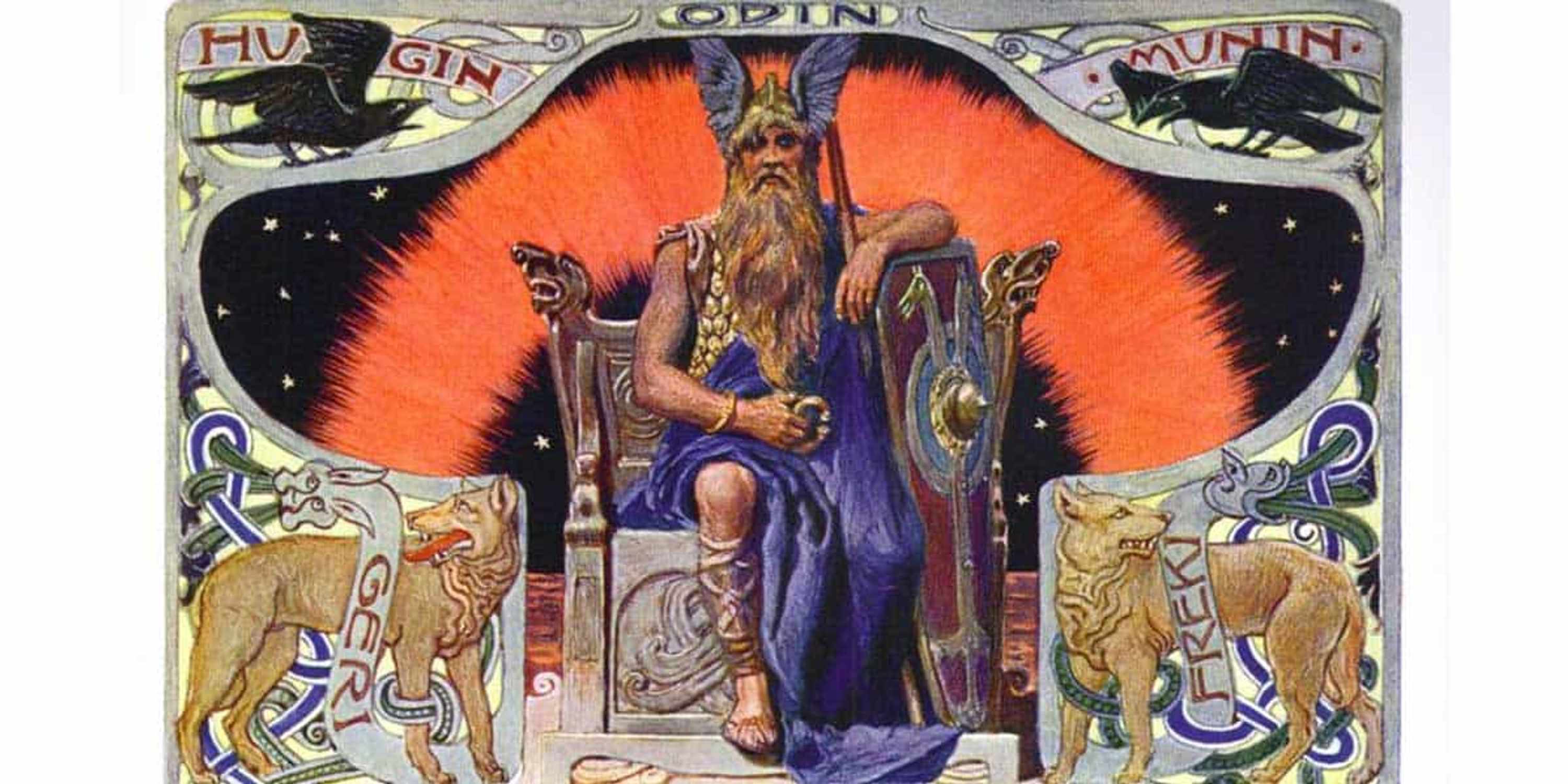
As for Father Christmas, his origins are rather vague, with nothing that connects St. Nicholas, a rather obscure Greek saint of the fourth century, with Lapland and reindeer. A more likely candidate is the Norse god Odin, whose epithet Yolfadr (Father Jolly) connects him with the midwinter festival of Yule, one of the great fire festivals celebrated throughout the northern hemisphere, symbolizing the rebirth of the sun, as the earth passes through the midwinter solstice marking the longest night and the shortest day.
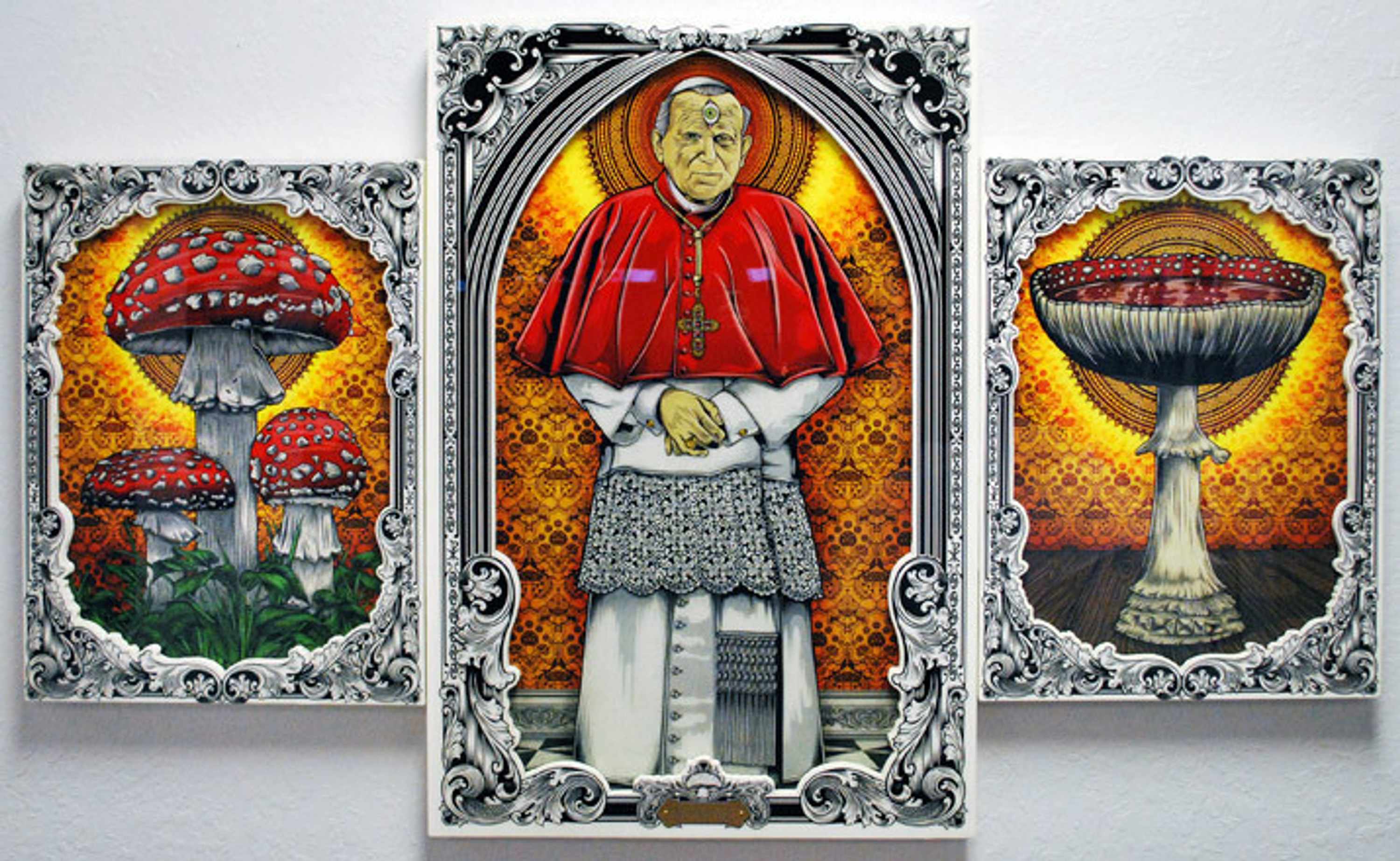
_“Mushroom Cult” by _Palehorse Design
The first known celebration of Jesus’s birthday was on December 25 336 in Rome. December 25 corresponds to the winter solstice on the Roman calendar and it was nine months after March 25, the date of the vernal equinox, which was linked to the conception of Jesus. The Roman cult of the sacrificial solar man-god Mithras, which Christianity would replace, was also December 25, while the solstice was the birthday of the Roman sun god Sol Invictus (‘Unconquered Sun’). Early Roman mosaics beneath St. Peter’s in the Vatican depict Christus Sol (‘Christ the Sun).
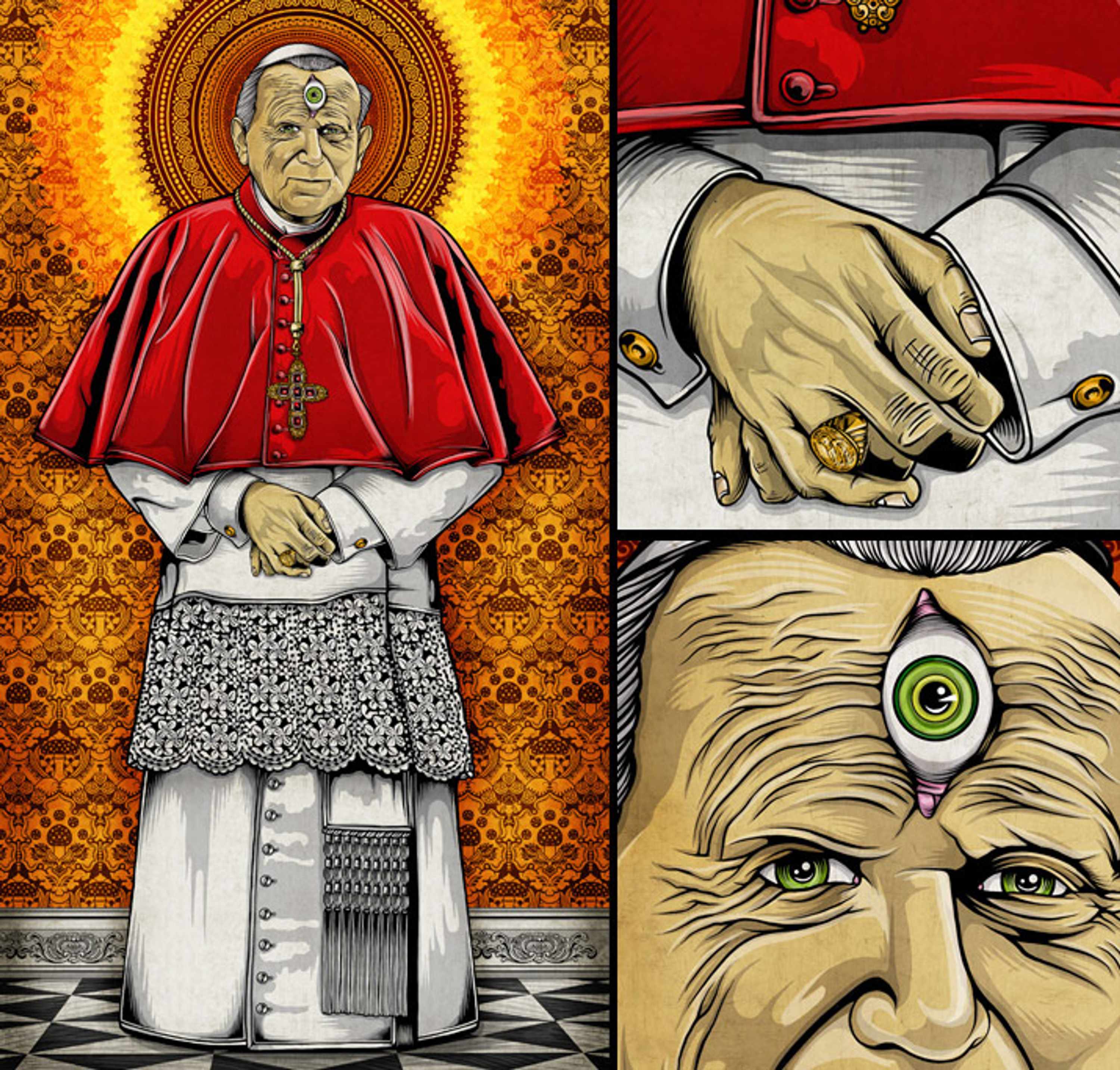
“Mushroom Cult” - detail
The birth of Jesus as the Sun of God at the darkest time of year can be seen as a fractal of the virgin birth of Creation itself, the Fiat Lux, the making of light. The famous Dead Sea Scrolls scholar John Allegro believed that this was the central mystery of a primordial tradition preserved by the Essenes, a Gnostic sect based in the Holy Land at the time of Jesus. His infamous book The Sacred Mushroom and the Cross (1970) proposed that the Jesus story was based on the symbolic myths of a mushroom cult that held the Forbidden Fruit eaten by Adam and Eve to have been Fly Agaric, and that Jesus was a personification of the mushroom itself, whose flesh was ritually eaten as a sacrament.
Allegro was held up to public ridicule and his academic career cancelled, but some of his ideas seem a little less preposterous in the light of recent and current psilocybin research carried out by the likes of Johns Hopkins University, who describe magic mushrooms as entheogens, substances capable of manifesting the divine within.
What could have been a more fitting sacrament with which to celebrate the true spirit of Yuletide, the manifesting of the divine light in the darkness, than the entheogenic flesh of the divine itself?
‘Tis the season to tend to the delicate flame.


